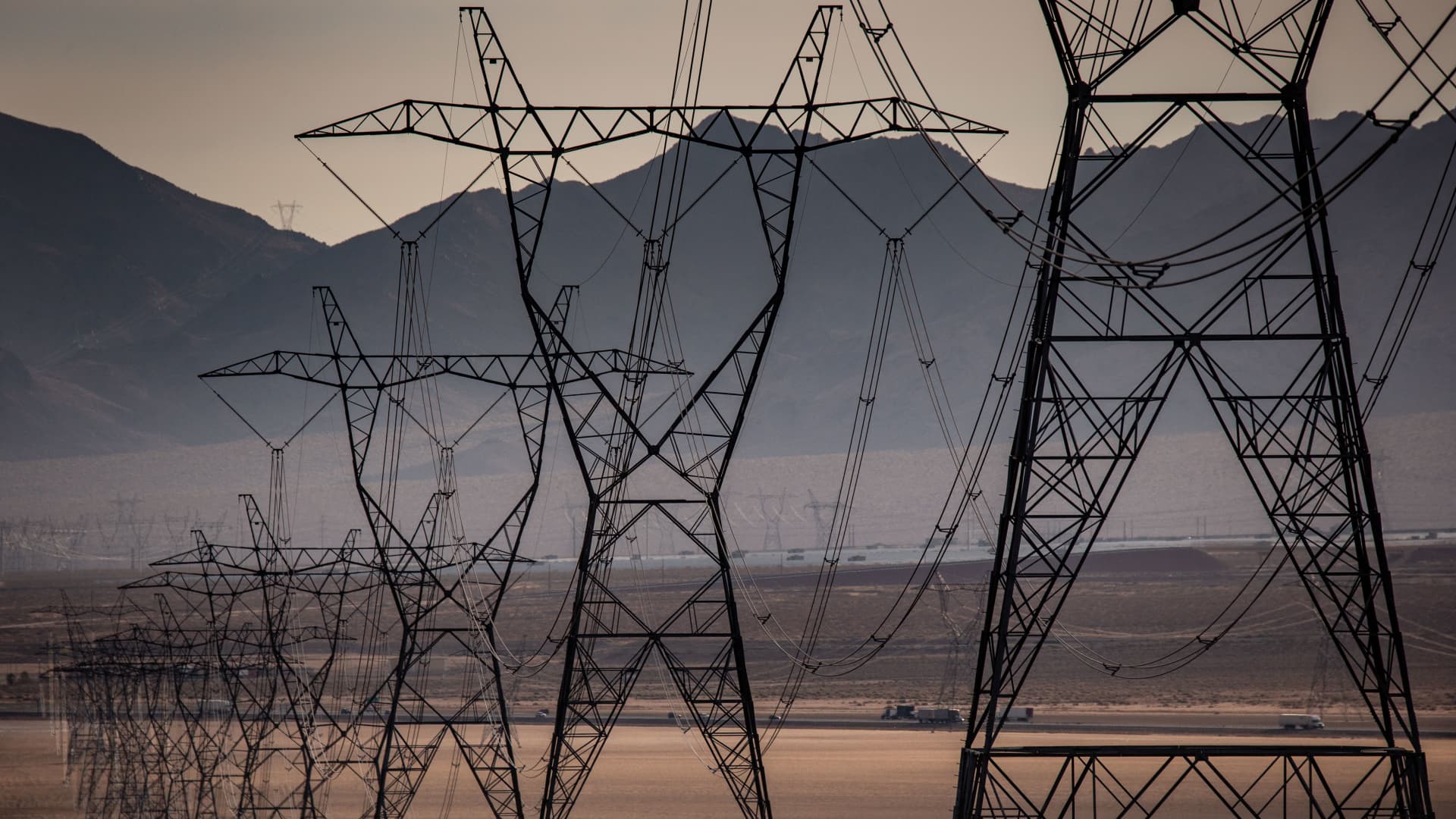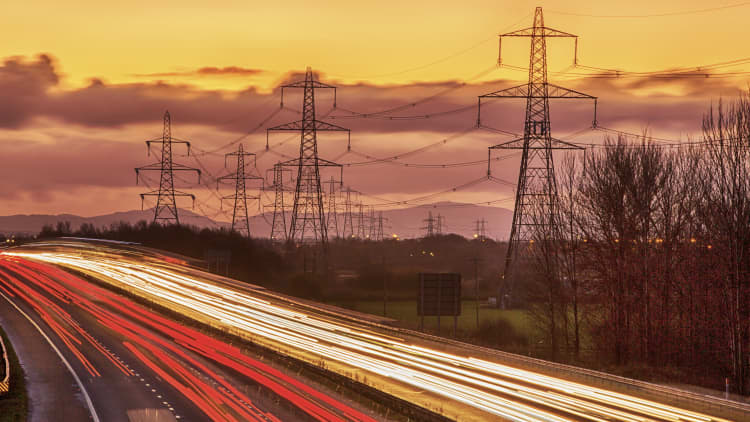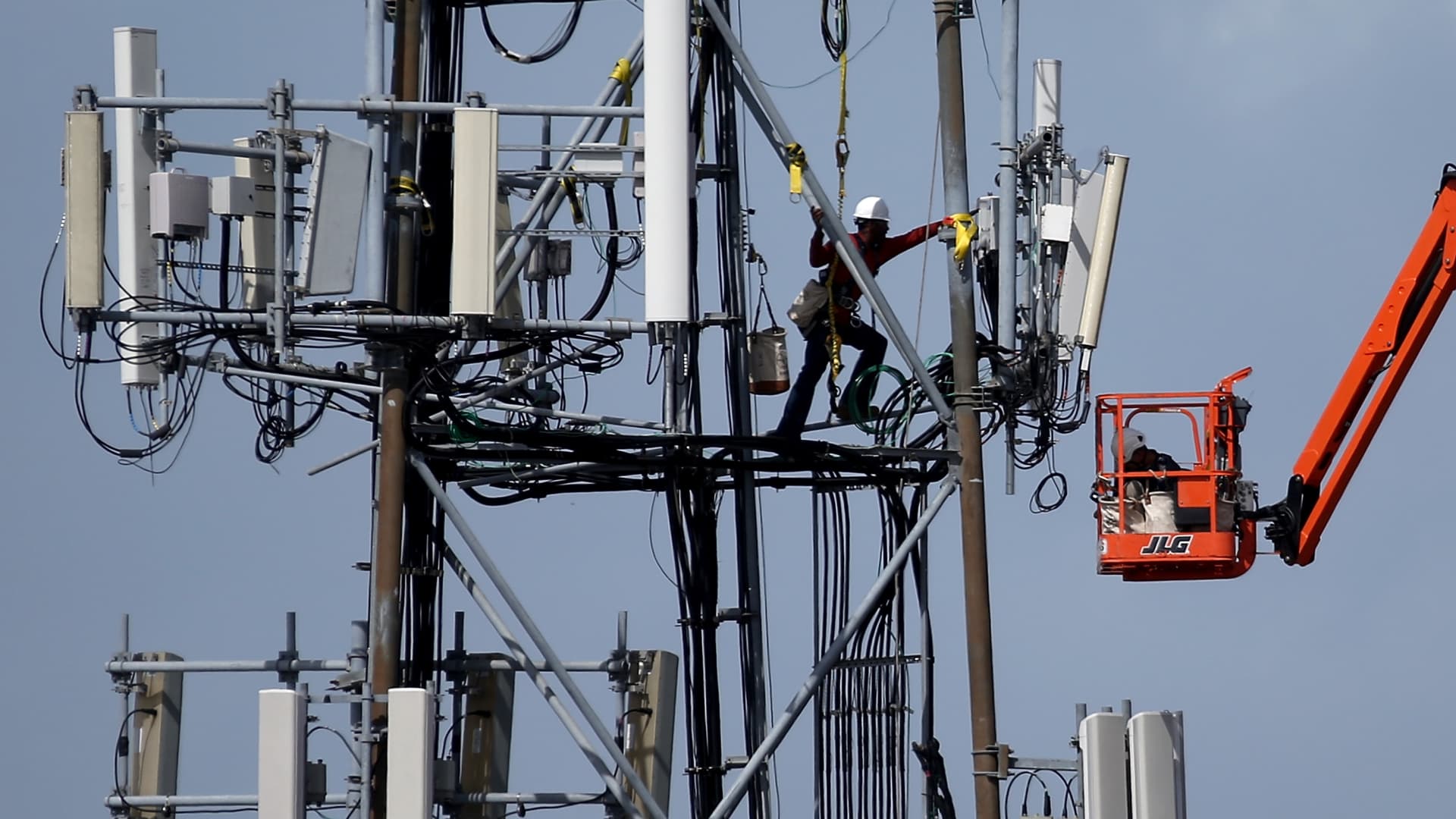
Heavy electrical transmission lines at the powerful Ivanpah Solar Electric Generating System, located in California’s Mojave Desert at the base of Clark Mountain are viewed near Primm, Nevada, July 15, 2022.
George Rose | Getty Images News | Getty Images
The world has to add or replace 49.7 million miles of transmission lines by 2040 in order for countries to meet their climate goals and to achieve energy security priorities, according to a new report published by the International Energy Agency on Tuesday.
That amount is roughly equivalent to the total number of miles of electric grid that currently exists in the world currently, according to the IEA.
This remarkable scale up in the construction of transmission lines across the globe will require the annual investment in electric grids of more than $600 billion per year by 2030, which is double what current global investment levels are in transmission lines, the IEA says.
It will also require changes in how the electric grid in each country is operated and regulated.
The global focus on some clean energy technologies — including wind, solar, electric vehicles and heat pumps — is impressive, but investment in transmission lines has been insufficient and will ultimately become an ever larger bottleneck, the IEA says.
“The recent clean energy progress we have seen in many countries is unprecedented and cause for optimism, but it could be put in jeopardy if governments and businesses do not come together to ensure the world’s electricity grids are ready for the new global energy economy that is rapidly emerging,” Fatih Birol, executive director of the IEA, said in a written statement published alongside the new report.
“This report shows what’s at stake and needs to be done. We must invest in grids today or face gridlock tomorrow,” Birol said.
There are currently 1,500 gigawatts of renewable clean energy projects in what the IEA calls “advanced stages of development” that are waiting to get connected to the electric grid around the world. For some sense of perspective, a mid-size city needs a gigawatt of electricity, Microsoft co-founder and climate investor Bill Gates said in his book, “How to Avoid a Climate Disaster.”
The 1,500 gigawatts of renewable clean energy projects waiting to be connected to the electric grid is five times the total wind and solar power added around the globe in 2022, the IEA says.
Demand for electricity is going to continue to rise as more sectors of the global economy transition to electric power.
Also, the electric grids were constructed to bring electricity from locations where fossil fuels were burned to where that electricity was needed. As the world works to transition toward a clean energy economy, the electric grid will increasingly need to run from where wind and solar farms are constructed to where electricity is used.
The consequences of falling further behind in building transmission lines is dire, the IEA says.
If the electric grid grows slowly, a scenario which the IEA called the “Grid Delay Case,” then an extra almost 60 billion metric tons of carbon dioxide emissions will be released between 2030 and 2050, the IEA says. That is equal to the amount of emissions the power sector across the entire world has released over the past four years, the IEA says.
In this case, global temperature averages in 2050 would be “well above” 1.5 degrees Celsius over pre-industrial levels — the goal of the 2015 Paris Climate Agreement — and there would be a 40% chance of overshooting 2 degrees, the IEA says.
Part of the challenge is that transmission lines take so long to build, especially compared to other parts of the energy infrastructure.
Building new transmission lines takes between five and 15 years, with planning and permitting included. By contrast, new renewable energy projects take between one and five years, and new infrastructure for charging electric vehicles takes less than two years, the IEA says. Therefore, investing in transmission line infrastructure improvement and growth must happen now or it will become an ever larger and more limiting factor in global decarbonization plans.
Building transmission lines globally needs to be an issue of international cooperation, the IEA says. “Ensuring the developing world has the resources it needs to build and modernize electricity grids is an essential task for the international community,” Birol said in the written statement.








